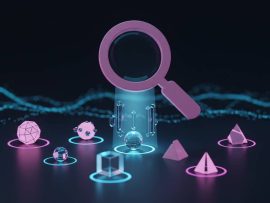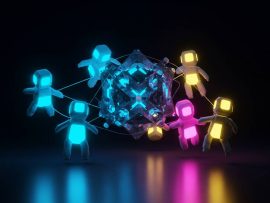By: Virtual Tech Vision
AI is rapidly becoming a ubiquitous presence in today’s world. From driving cars to diagnosing illnesses, AI is revolutionizing various industries. However, as the adoption of AI technology increases, so does the need for responsible and trustworthy AI practices. Terms like “ethical AI” and “trustworthy AI” are often used interchangeably, but it is essential to understand the distinctions between these concepts to ensure the development of AI systems that align with ethical principles.
Contents
The Problem With “Trustworthy AI”
One of the key problems with the term “trustworthy AI” is that it humanizes AI and implies a level of dependability that may not exist. Ricardo Baeza-Yates, the director of research at the Institute for Experiential AI (EAI), emphasizes that AI is not human and, therefore, cannot be trusted in the same way as humans. Asking users to trust AI is misleading because AI systems do not always work flawlessly. Baeza-Yates compares it to calling aviation “trustworthy aviation.” If something works, there is no need to add the term “trustworthy” to it. The distinction between engineering and alchemy is crucial in this context.
Cansu Canca, ethics lead at EAI, adds that focusing on “trustworthy AI” directs attention solely to the end goal of creating trust in the user. This approach circumvents the essential work of integrating ethics into the development and deployment of AI systems. Trust should be an outcome of responsible AI practices, not the sole focus.
The Problem With “Ethical AI”
Similarly, “ethical AI” poses challenges as it implies a degree of moral agency in AI systems. While AI can produce ethical or unethical outcomes, it is not an ethical being with intent or moral agency. Ethics, in its true sense, is the domain of human beings. Difficulties arise when AI systems with autonomous decision-making capabilities are designed without considering the ethical intent of the people creating them.
Responsible AI
Both Ricardo and Cansu prefer the term “responsible AI” to encompass the necessary considerations for ethically sound AI development and use. While they acknowledge that “responsibility” is a human trait, it has been extended to institutions through the law. Therefore, “responsible AI” refers to creating structures and roles for developing AI responsibly. The responsibility lies with the people who design and develop AI systems.
The concept of responsible AI includes AI ethics as a crucial component. It involves collaboration between philosophers, developers, and designers to identify ethical risks and mitigate them during AI system development and AI product design. Responsible AI allows for innovative, interdisciplinary spaces where all stakeholders can contribute to the development of an ethical core.
The AI Ethics Advisory Board at EAI plays a vital role in promoting responsible AI practices. Comprised of AI experts from various domains, the board helps organizations anticipate and address ethical challenges during AI planning, development, and deployment.
To learn more about responsible AI, AI ethics, and trustworthy AI, you can watch a fireside chat featuring Cansu Canca and Ricardo Baeza-Yates on the Virtual Tech Vision website here.
FAQs
What is the difference between trustworthy AI, ethical AI, and responsible AI?
Trustworthy AI refers to the idea that AI systems can be trusted, but this can be misleading as AI is not human and cannot be trusted in the same way as humans. Ethical AI implies moral agency in AI systems, which is not accurate. Responsible AI encompasses the idea of developing and using AI systems with ethical considerations and structures in place. It emphasizes the responsibility of the people designing and developing AI systems.
How can responsible AI be achieved?
Responsible AI can be achieved by integrating ethics into AI system development and focusing on the responsible use of AI technology. It involves collaboration between philosophers, developers, and designers to identify and mitigate ethical risks during the development process. Responsible AI ensures that ethical considerations are at the forefront of AI system design and deployment.
Conclusion
As AI continues to advance, it is crucial to understand the distinctions between ethical AI, responsible AI, and trustworthy AI. While ethical AI and trustworthy AI can be misleading, responsible AI emphasizes the need for ethical considerations and the responsibility of people involved in AI system development. By promoting responsible AI practices, we can create AI systems that align with ethical principles and gain the trust of users.
Subscribe to the Virtual Tech Vision monthly newsletter to stay informed about the latest AI trends, and contact us if you need expertise in responsible AI for your AI or data project. Together, we can shape a future where AI development and deployment are guided by ethical principles and responsible practices.







